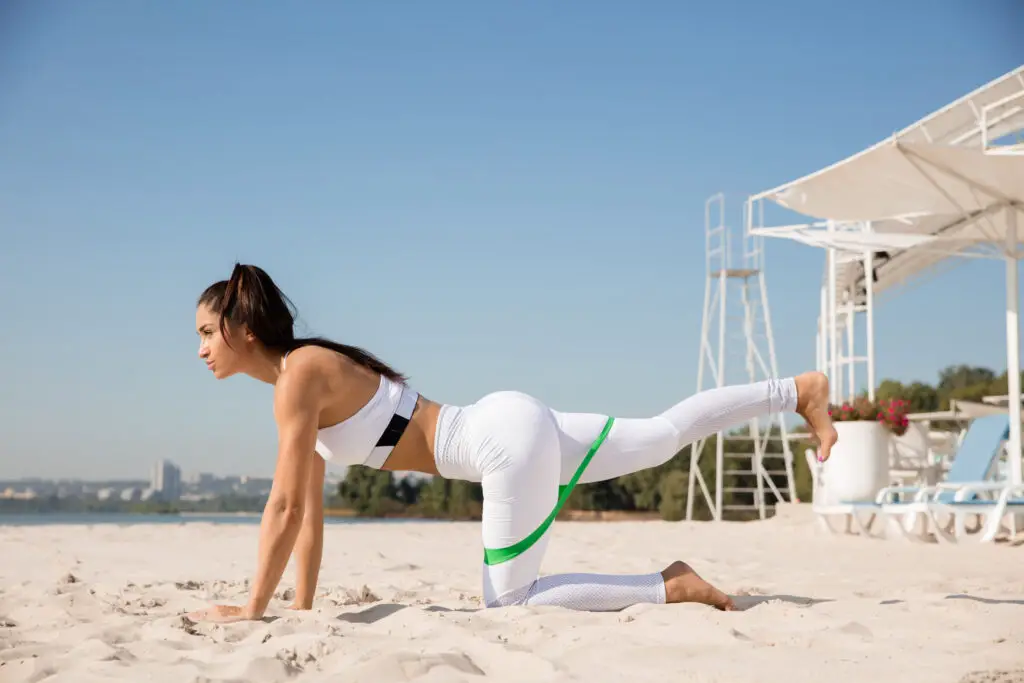Table of Contents
- <strong>Understanding SPF (Sun Protection Factor)</strong>
- <strong>Factors to Consider When Choosing SPF Sunscreen for Exercise</strong>
- <strong>So, what SPF Sunscreen Should I Use For Exercise? Recommended SPF Levels for Exercise</strong>
- <strong>Additional Tips for Sun Protection During Exercise</strong>
- <strong>Choosing the Right Sunscreen for Exercise. What SPF You Should Use for Exercise.</strong>
- Final Thoughts – Why Sunscreen Is Important During Exercise
When it comes to outdoor exercise, it’s important not only to focus on your physical fitness but also to prioritize your skin health. Exercise outside exposes your skin to harmful ultraviolet (UV) radiation, which can lead to sunburn, premature aging, and even skin cancer. In this blog, we’ll explore the topic of choosing the right SPF sunscreen for exercise to help you protect your skin effectively.
Understanding SPF (Sun Protection Factor)
Before diving into sunscreen recommendations, let’s understand what SPF really means. SPF stands for Sun Protection Factor and refers to the level of protection a sunscreen offers against UVB rays, the type of rays responsible for sunburn. SPF indicates how much longer it takes for your skin to burn with sunscreen compared to without it. For example, if you usually burn within 10 minutes of sun exposure, SPF 30 sunscreen would theoretically allow you to stay protected for 300 minutes (10 minutes x SPF 30).
Contrary to popular belief, higher SPF values do not provide significantly longer protection. SPF 30 blocks about 97% of UVB rays, while SPF 50 blocks around 98%. Therefore, SPF 30 is often considered adequate for most individuals.
Factors to Consider When Choosing SPF Sunscreen for Exercise
Several factors come into play when selecting a sunscreen for outdoor exercise:
1. Skin type and sensitivity
Individuals with fair skin or a history of easily getting sunburned may require higher SPF protection.
2. Intensity and duration of exercise
Longer and more intense workouts may necessitate higher SPF or reapplication.
3. Geographic location and UV index
Higher UV index regions or sunnier climates call for increased protection.
4. Water and sweat resistance
Look for sunscreens labeled as “water-resistant” or “sweat-resistant” for better efficacy during exercise.
So, what SPF Sunscreen Should I Use For Exercise? Recommended SPF Levels for Exercise
There is a full breakdown of SPF levels at the Skin Cancer Foundation website. However, generally choosing the right SPF level depends on the nature of your exercise routine:
1. SPF 15-30
Suitable for low to moderate-intensity exercise and shorter durations. This range provides a good balance between protection and affordability. It can be suitable for individuals with darker skin tones who are less prone to sunburn.
2. SPF 30-50
Ideal for moderate to high-intensity exercise and longer durations. These SPF levels offer increased protection and are generally suitable for most individuals.
3. SPF 50+ and Broad-Spectrum Sunscreens
Recommended for high-intensity exercise and extended sun exposure. SPF 50+ sunscreens provide an extra layer of protection, particularly for individuals with fair or sensitive skin. It’s essential to choose broad-spectrum sunscreens that protect against both UVB and UVA rays.
Additional Tips for Sun Protection During Exercise
In addition to choosing the right SPF sunscreen, consider the following tips to enhance sun protection during exercise:
1. Proper application techniques
Apply sunscreen generously and evenly on all exposed areas, including ears, neck, hands, and feet.
2. Timing of sunscreen application
Apply sunscreen at least 15-30 minutes before heading outside to ensure optimal absorption and effectiveness.
3. Protective clothing and accessories
Wear lightweight, breathable clothing that covers your skin, along with a wide-brimmed hat and UV-protective sunglasses.
4. Seeking shade during peak sun hours
Plan your exercise routine during early morning or late afternoon hours to minimize sun exposure when the sun’s rays are strongest.
Choosing the Right Sunscreen for Exercise. What SPF You Should Use for Exercise.
When selecting a sunscreen for exercise, consider the following factors:
1. Checking for FDA approval and relevant certifications
Look for sunscreens that have been approved by the U.S. Food and Drug Administration (FDA) and carry certifications such as the “Broad Spectrum” label. These indicate that the product meets specific standards for sun protection.
2. Examining the product labels for active ingredients
Opt for sunscreens that contain active ingredients like zinc oxide or titanium dioxide, which provide effective broad-spectrum protection. These ingredients form a physical barrier on the skin, reflecting and scattering UV rays.
3. Considering personal preferences
Sunscreens come in various forms, including lotions, sprays, gels, and sticks. Choose a formulation that suits your preferences in terms of fragrance, texture, and ease of application. Remember to prioritize effectiveness over convenience.
Remember, regardless of the SPF level, it’s crucial to reapply sunscreen every two hours, or more frequently if you’re sweating excessively or coming into contact with water.
Final Thoughts – Why Sunscreen Is Important During Exercise
As you strive to maintain a healthy and active lifestyle, don’t overlook the importance of protecting your skin during outdoor exercise. Choosing the right SPF sunscreen based on your skin type, the intensity of your workouts, and environmental factors will help shield your skin from harmful UV rays.
Remember to apply sunscreen correctly, wear protective clothing, and seek shade whenever possible. By prioritizing sun protection, you can enjoy your outdoor workouts while safeguarding your skin’s health and preserving its youthful appearance for years to come.
Make sunscreen a vital part of your exercise routine—it’s an investment in your overall well-being.
Image by master1305 on Freepik


